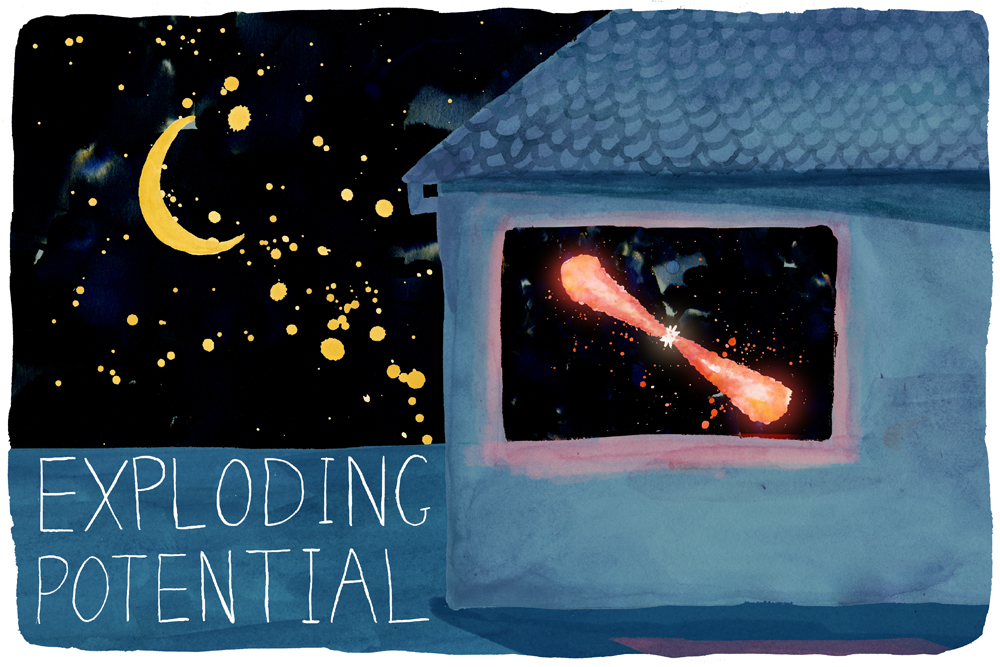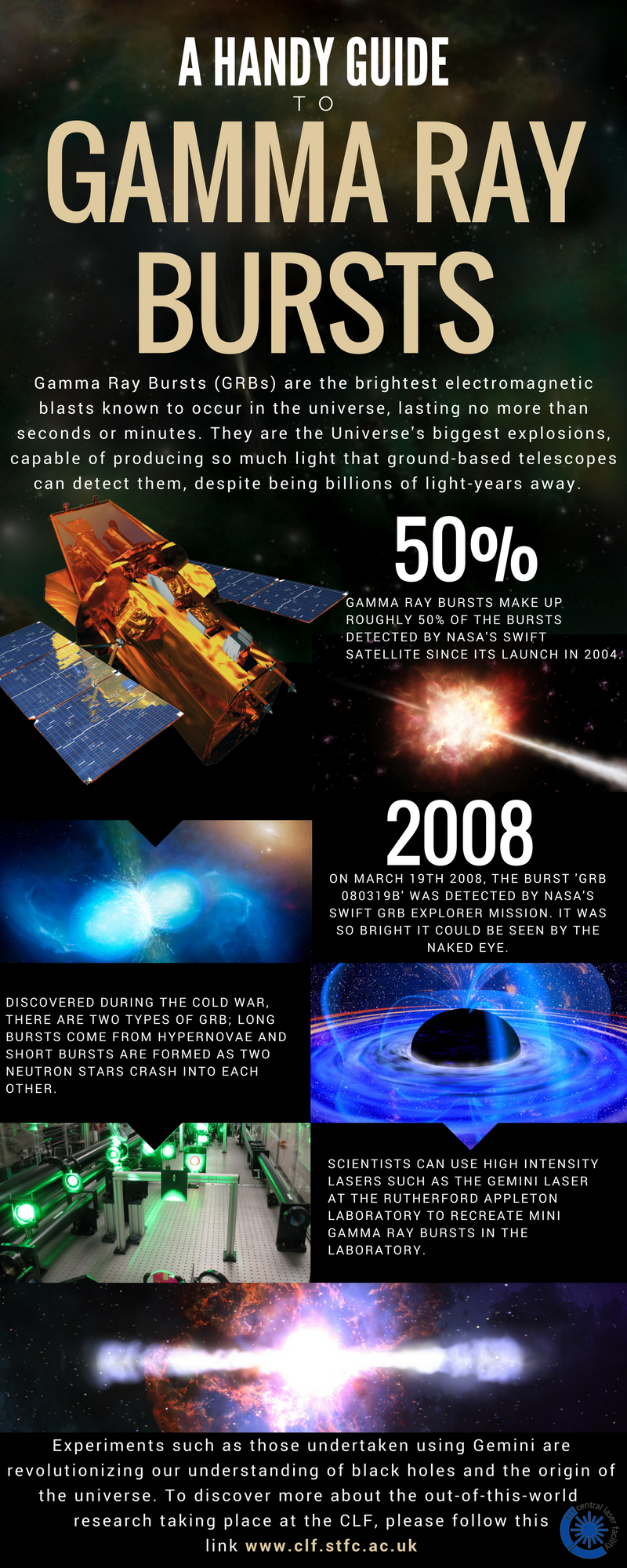Their experiment will further our understanding of black holes and pulsar emissions, and even fuel the search for extra-terrestrial life.
On 19 March 2008, an unusual light shone in the sky that was so bright it could be seen with the naked eye. The source of this light came from a gamma ray burst (GRB 080319B), almost 7.5 billion light years from Earth. Quite remarkably, the afterglow of the burst went on to set a new record for being the 'most intrinsically bright object ever discovered by humans in the universe'. So what does this title really mean? If I say that this GRB was 2.5 billion times brighter than the brightest supernova recorded to date – SN 2005ap – the sheer immenseness of this catastrophic event becomes more evident.
According to NASA, GRBs are the brightest electromagnetic blasts known to occur in the universe, the greatest explosions in the cosmos since the Big Bang. They usually last no longer than seconds or minutes but can be seen from billions of light years away and can outshine an entire galaxy. As the name suggests, they are a key source of gamma rays - a type of electromagnetic radiation, just like radio waves and X-rays. Whilst the bright light illuminating the sky in 2008 might not be a common occurrence – largely due to the effect of the Earth's atmosphere blocking most gamma rays – scientists estimate that GRBs actually happen hundreds of times a day, somewhere in the cosmos. Good job we have orbiting telescopes such as the Swift explorer, to detect these incredible bursts of high energy radiation.
Multiple hypotheses have attempted to explain the origin of GRBs but the truth is, no-one really knows exactly how and why they form. Mostly because there is the small issue of not being able to actually create a black hole in a laboratory…
Scientists have pondered upon methods of replicating such a large-scale event. In 2017, this questioning became a reality. A team based at Queen's University, Belfast, working in collaboration with the Gemini laser team at the CLF, are starting to uncover the facts behind these extraordinary events.
Chris Hooker, Gemini section leader explains: "If you dramatically scale down the power required to power a miniature-scale GRB, you get the Gemini laser. A high power, ultra-short pulse, high repetition laser – with twin beams, Gemini – is one of the world's most powerful super-intense light sources. The power from the Gemini dual beam is so intense that it is capable of generating bright, coherent X-ray sources, or energetic beams of electrons and protons. To put it another way... if you could take all of the solar power that hits the Earth and squeeze it into a few microns (we're talking the width of a human hair!) then you would get an intensity that is equal to a typical laser shot in Gemini."

Figure 1: Illustration by Helen Towrie, CLF
The team using Gemini were, led by Gianluca Sarri from Queen's University Belfast. As Pete Brummit at the CLF, who led the engineering design for the experiment, describes "this was a complex design with a number of challenges. The tricky part was getting multiple bits of equipment in a very tight envelope". The CLF's Dan Symes was the link scientist. Together, they, created a unique state of matter known as 'neutral electron-positron plasma' for the first time. Often referred to as the 'fourth state of matter', plasma is an ionized gas consisting of positively-charged ions and negatively-charged electrons. In order to generate a beam containing equal amounts of electrons and positrons (the antimatter equivalent of electrons) called an EPB, the scientists channelled an intense laser pulse through a chamber filled with helium.
Whilst the research group had generated a similar beam in previous experiments, never before has anyone been able to analyse their kinetics. By measuring the behaviour of the EPB, they revealed unprecedented insight into fundamental phenomena in basic pair plasma physics.
The significance of this research was highlighted by Gianluca in a special post he wrote for The Conversation:
"In our experiment, we were able to observe, for the first time, some of the key phenomena that play a major role in the generation of gamma ray bursts, such as the self-generation of magnetic fields that lasted for a long time. These were able to confirm some major theoretical predictions of the strength and distribution of these fields. In short, our experiment independently confirms that the models currently used to understand gamma ray bursts are on the right track."
The team hope that this information will be used in the future to better understand gamma ray bursts and even fuel SETI - the Search for Extra-Terrestrial Intelligence - by allowing scientists to determine whether a signal spotted in the sky is of stellar or alien origin.
The paper, published in the journal Physical Review Letters, has attracted a lot of attention, featuring in news websites such as Yahoo, Forbes and Gizmodo. It also gained an Altmetric score of 185 – placing it in the top 5% of all research outputs scored by Altmetric, a handy online tool that provides details of the activity surrounding a paper on the internet.
The research was supported by EPSRC and STFC and the full publication is available to view in Physical Review Letters.
For further information about the research, please contact Dr Gianluca Sarri (g.sarri@qub.ac.uk)

Figure 2: A Handy Guide to Gamma Ray Bursts by Emily Cooke, CLF
